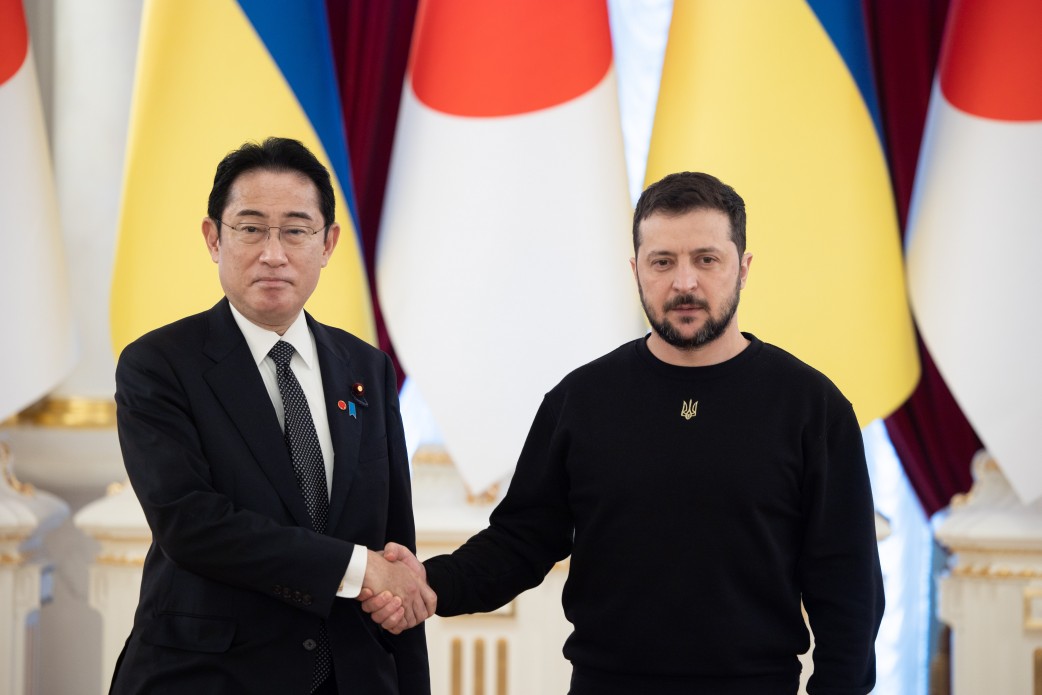Mitsubishi produces around 30 missiles a year and Japan to sell $19m in Patriot missiles to U.S. to re-supply Ukraine
North Eastern Asia
39 views 0

Japan will sell an undisclosed number of Japanese-made Patriot missiles to the U.S. for 3 billion yen ($19 million) to help replenish American stockpiles that have been running low after boosting Ukraine’s air defenses.

The agreement, announced by Japan’s Acquisition, Technology & Logistics Agency (ATLA) on Sunday, comes seven months after Japan decided to transfer some of the Self-Defense Forces’ (SDF) existing Patriots at the request of the Biden administration.
An ATLA official declined to comment on how many missiles were being sold, but a former Pentagon official with knowledge of the negotiations said the number was around 10. The SDF will sell the standard PAC-3 missiles to the U.S. military “soon,” according to ATLA.
An acronym for “Phased Array Tracking Radar to Intercept on Target,” the Patriot missile is the U.S. Army’s most advanced air defense system, according to the Congressional Research Service. It is capable of detecting and shooting down incoming missiles.
In the U.S., the radar and ground systems are produced by RTX, formerly Raytheon Technologies, while the interceptor missiles are manufactured by Lockheed Martin.
Japan’s Mitsubishi Heavy Industries produces around 30 missiles a year for the Air Self-Defense Force. The SDF currently possesses three types of Patriot missiles: the PAC-2, the PAC-3 and the more advanced PAC-3 MSE, which is short for Missile Segment Enhancement. An advanced PAC-3 missile is typically valued at around $4 million.

The MSE variant has an extended range of up to 50%. The Ministry of Defense said in its press release Sunday that Japan and the U.S. have confirmed the PAC-3 missiles will not be provided to non-U.S. government entities and that they will backfill U.S. stockpiles.
At a two-plus-two meeting of foreign and defense ministers in Tokyo on Sunday, the U.S. and Japan agreed to expand the coproduction of PAC-3 MSEs and to begin coproduction of the Advanced Medium-Range Air-to-Air Missile (AMRAAM).
Yuki Tatsumi, a senior fellow at the Stimson Center, said that while the size of the Patriot transfer may be small, “it is important to set a precedent.” With a clear signal from the U.S. to increase coproduction, “Japanese industry can invest more in its capacity,” she said.
The ministers said in a joint statement that demand for such weapons was at “critical” levels and that the joint efforts of coproduction will be “high priority.” They also agreed to establish a new U.S. joint force headquarters to assume “primary responsibility for coordinating security activities in and around Japan.”
Reuters reported earlier this month that plans to boost production of Patriot missiles in Japanese factories have been delayed by shortages of a critical component manufactured by Boeing. There is a shortage of the missiles’ seekers, which guide them in the final stages of flight, the report said.
At a time when Russia is rebuilding its defense industrial base with the support of China and North Korea, the U.S. is increasingly looking to its allies and partners to complement its industrial base limitations.

At the NATO summit held in Washington earlier this month, the Euro-Atlantic military alliance discussed tapping the industrial capabilities of its Indo-Pacific partners — Japan, South Korea, Australia and New Zealand.
But Elizabeth Buchanan, a senior fellow at the Australian Strategic Policy Institute, questioned the feasibility of such cooperation, as well as the idea of taking Patriot missiles out of the Indo-Pacific to backfill American warehouses.
“We need to talk realistically about ‘will’ and long-term strategic trajectories for states of Asia,” she said. “Asia is the center of global power for the next iteration of strategic competition. Does it make sense for these states to align with plans from beyond the region?
Source :
- Previous Break-Up of New Caledonia – France accuse Azerbaijan nch Pacific colony rocked by a wave of unrest
- Next From $12.5 billion to $15 billion: Air Force officials spotlight cost jumps, delays for B-52 bomber modernization
















